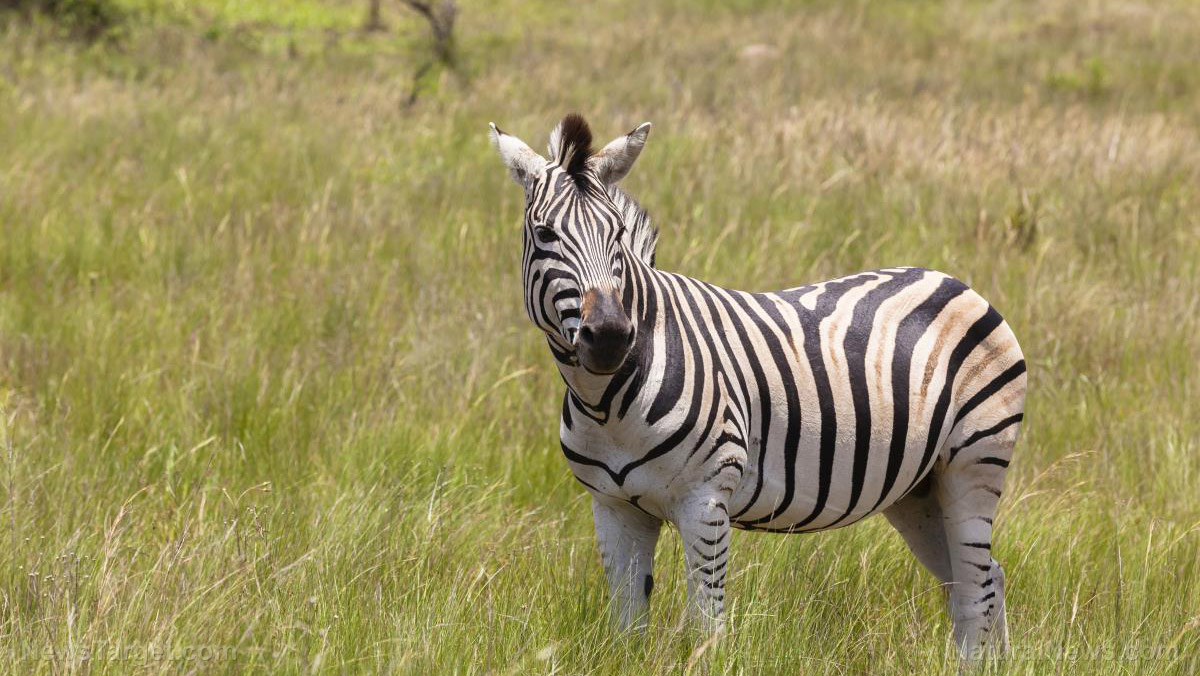
The flies feed on the blood of zebras and other warm-blooded animals. The insects touch down on their targets, bite through the skin, and drink their fill.
The research team conducted an odd experiment. They borrowed both zebras and domestic horses sharing the same grazing ground in Somerset County in southwestern England. Thy dressed up the horses in coats that sported different colorations. They started with solid black coats, switched to pure white ones, and finally used the black-and-white stripes of zebras. Then they exposed the coated horses, unclothed counterparts, and actual zebras to horseflies.
Their results showed that horseflies approached horses and zebras at more or less the same rate. However, the blood-sucking insects made far fewer successful landings on zebras.
On horses wearing zebra coats, the researchers observed that horseflies also landed far less often on the striped coats. The flies, however, did not get deterred from landing on the unprotected head of the animals. (Related: Painting white stripes on your body may protect you from insect bites, according to scientific studies.)
Zebra stripes confuse horseflies into crashing or veering away
The UC Davis researchers reviewed video footage of the experiment. They showed that horseflies experienced uncontrolled approaches when confronted with the patterned skin of a zebra or the striped coat of a horse.
The flies tended to approach their striped targets too quickly. They either broke off the landing or collided with the animal.
“Once they get close to the zebras, however, they tend to fly past or bump into them,” remarked UC Davis researcher Tim Caro, who served as the leader of the experiment. “This indicates that stripes may disrupt the flies' abilities to have a controlled landing.”
His U.K. colleague, Dr. Martin How of the University of Bristol, postulated that zebra stripes dazzled the horseflies at close range. Their vision of flies suffered from low resolution, and the effect only took place at short ranges.
In a similar vein, human pilots experienced dazzled visions when they tried to land their aircraft while facing the sun. The effect caused many aircraft accidents.
When it comes to fending off flies, zebras are much more proactive than horses
Caro and How held their study at a Somerset horse farm that kept both domestic horses and tame zebras. They sought to determine the reason why zebras evolved their distinctive stripes.
Some experts theorized the stripes served as camouflage in the savanna environment or dazzle markings that threw predators off. Others believed that the patterns served as a means of visual communication with other members of the herd. Another group thought the markings helped regulate the body temperature of the animals.
A new line of thought proposed that the stripes protected the zebras from tsetse flies and other blood-sucking insects in Africa. The researchers explored this theory.
They observed that zebras supplemented the dazzle camouflage of their hides by swishing their thick tails nonstop. The constant swishing helped repel the flies from getting too close.
If a zebra felt overwhelmed by the persistence of flies, it quit grazing. Eventually, the beleaguered animal bolted away to shake off the pests.
In contrast, domestic horses got horseflies to lay off them by twitching sharply. But the equines continued grazing and didn't bother to run away.
Also, horses rarely swished their tails to drive off the flies. As a result, the horseflies kept coming back to their buffet.
Sources include:
Please contact us for more information.























